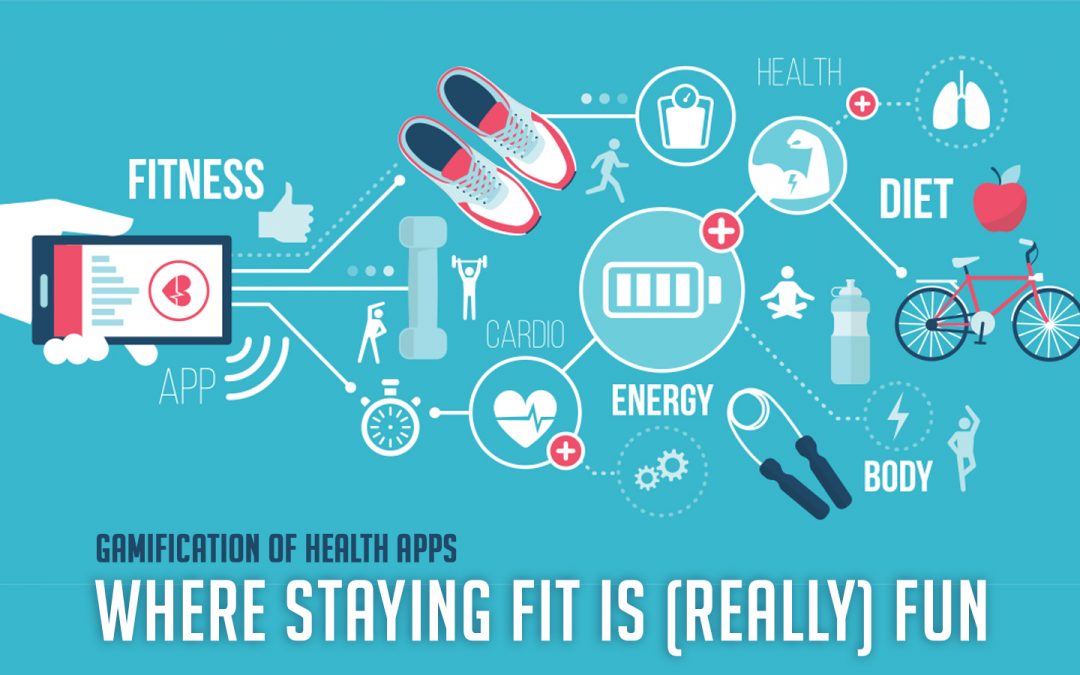In this article, we discuss why a food journal is vital for sufferers and how or to-be-launched Allergy Finder App is a great tool that is made even more intuitive and fun to use with its strong gamification aspect.
What is Gamification
A very simple definition of gamification would say that it is the application of game design and style in non-gaming contexts. This approach is used to solve problems by engaging the players or participants in otherwise everyday tasks and making these activities more fun and interesting.
Nowadays, gamification is being used in many industries, including healthcare, transforming mundane user experiences into the excitement of playing a game. Mostly, it is used in fitness applications, medical adherence and medical education.
Here we explore the gamification of health applications, which has, undeniably, made staying fit fun.
Gamification in Health Applications
Gamification not only increases our focus but also enables us to attain goals which otherwise would have been too difficult for us to reach. This aspect of gamification has successfully been exploited by the health industry. As early as 2016, Fitbit announced that it was teaming up with other corporations to track employees and use the data to track their health habits. Thus, in the beginning, Fitbit was used by various companies as a fitness tracker for their employees, motivating them to take better care of their well-being in the corporate rat-race. Slowly, gamification was incorporated in many other fitness apps, at which we shall take a brief look.
Examples of Gamification in Health Applications
Pact: Perhaps this is the most fun of all fitness applications out there. Pact tracks fitness on mobile phone devices and those users who do not meet their fitness goals have to contribute money—which goes to those users who have met their goals! It is only natural that nobody likes to pay anyone on their expense.
Mango Health: On a completely different level, Mango Health is an application which motivates patients to take their medications on time. The users set a time on which they need to take medications and the app reminds them like an alarm. Having taken their medications properly, they earn points and get gift cards and more. The application also educates patients about drugs and their side effects.
EveryMove: EveryMove uses competitiveness to motivate users to stay fit. It collects data from mobile devices and allows friends to compare one another’s progress.
mySugr: mySugr is an Australian startup which provides a fun solution for diabetes management. It has a separate app for helping children with diabetes management which is called mySugr Junior App. mySugr has been very successful with all age groups and it has more than one million registered users and is available in 52 countries in at least 13 languages. Most recently, it was acquired by the pharmaceutical giant Roche.
How Gamification can Help people Fight Food Allergies
Gamification has been steadily on rise in various industries including education, marketing and social living. It has been of a particular success in the health industry. Where it is hard for people to keep up their spirits while trying to be fit, gamification not only helps them achieve this goal but also brings much fun in the process.
32 million Americans have food allergies. That means one in every 10 adults and one in every 13 children. Researchers have found an increasing prevalence in food allergies in the industrialized world for the past 50 years. The burden of this problem is the fact that there has been a steady rise in the number of ER visits for food allergy-related emergencies.
While there is no cure for food allergies, the best way to stay away from it is through prevention and avoiding food that you are allergic to. But how do you identify which food you are allergic to?
Food journaling or a food diary is a great way to identify the ‘culprit’. Maintaining a food journal can be an extremely helpful way to avoid “rogue” foods and to keep track of adverse reactions when they happened so as to avoid them the next time.
In the food journal, keep making entries every time you eat or drink something. Record if you show any allergic symptoms like itching, coughing, swelling, redness, diarrhea, stomach ache, wheezing, etc. Record the time when the symptoms start. This information is vital for you and your doctor to strategize your dietary schedule and avoid certain foods.
Maintaining a physical journal can be cumbersome for most sufferers. A manual food diary also does not make analysis easy. Everything, from recording meals to analyzing potential allergens and problem foods has to be done manually. This can become quite a task. Maybe things would become a whole lot easier if there was an easy to use app for it? Would not a digital food journal help?
In the last newsletter, we had mentioned about the development of the Allergy Finder App. This app is more than a food journal though. It is a community empowerment tool, where collective data will help sufferers take control of their health. We are in the process of giving the final touches to the app and we expect to launch it soon.
The app is free to download and comes with a 7-day free trial. After that users will need to subscribe to continue using its services at a flat rate of $34.99 per year.
A lot of thought has gone into the making of this app with subject matter experts, tech experts and food allergy sufferers chipping in with their insights. We believe that this app will be a great tool for the millions of food allergy sufferers to take control of their condition and live a healthy life with informed dietary choices.

